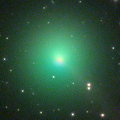
|
Now it is very bright as 6.6 mag (May 30, Marco Goiato). Brightening very rapidly. It will approach to Sun down to 0.9 a.u. in June, and it is extected to brighten up to 5.5 mag. In the Southern Hemisphere, it stays observable in good condition for a long time after this. In the Northern Hemisphere, it is not observable until late June.
Date(TT) R.A. (2000) Decl. Delta r Elong. m1 Best Time(A, h)
May 30 6 54.87 -19 48.1 1.107 0.980 54 6.5 20:50 ( 77,-16)
June 6 7 32.35 -17 59.4 1.006 0.943 55 6.0 20:56 ( 78,-15)
|

|
It brightened up to 4.7 mag in early May (May 2, Marco Goiato). However, it is fading and getting diffused after that. It has already faded down to 7.3 mag (May 21, Mitsunori Tsumura). It is not observable until August after this.
Date(TT) R.A. (2000) Decl. Delta r Elong. m1 Best Time(A, h)
May 30 4 51.71 46 11.6 1.005 0.435 24 7.1 20:50 (146, 4)
June 6 5 29.44 43 18.7 1.265 0.495 21 8.2 20:56 (144, 2)
|

|
Now it is very bright as 7.3 mag (May 30, Marco Goiato). It will approach to Sun down to 0.3 a.u. on July 3, and it is expected to brighten up to 2.5 mag. In the Southern Hemisphere, it stays observable in good condition until early June when it brightens up to 8 mag. But it will not be observable around the perihelion passage. In the Northern Hemisphere, it is not observable now. It will appear in the evening sky at 3-4 mag in mid July, then it stays observable while getting fainter.
Date(TT) R.A. (2000) Decl. Delta r Elong. m1 Best Time(A, h)
May 30 6 3.95 -3 15.6 1.611 0.961 34 8.4 20:50 ( 99,-18)
June 6 6 2.77 1 36.2 1.585 0.813 26 7.6 20:56 (109,-22)
|

|
Now it is 8.4 mag (May 27, Charles S. Morris). It stays bright as 8-9 mag until July. It is observable in good condition in the Northern Hemisphere. In the Southern Hemisphere, it is not observable until late June.
Date(TT) R.A. (2000) Decl. Delta r Elong. m1 Best Time(A, h)
May 30 10 43.34 66 13.1 1.659 1.650 71 8.2 20:50 (155, 52)
June 6 11 16.62 61 17.7 1.667 1.672 72 8.2 20:56 (148, 54)
|
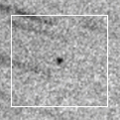
|
It will approach to Sun down to 0.34 a.u. and brighten up to 7 mag in June. In the Southern Hemisphere, it will appear in the evening sky at 7 mag in early July. Then it stays observable in good condition while the comet will be fading. In the Northern Hemisphere, it is not observable until mid August when the comet will fade down to 12 mag.
Date(TT) R.A. (2000) Decl. Delta r Elong. m1 Best Time(A, h)
May 30 4 10.55 26 4.3 1.732 0.731 5 10.5 3:04 (226,-12)
June 6 4 51.63 26 51.9 1.609 0.603 4 9.8 3:01 (222,-14)
|

|
Recovered from SWAN images after 24-year blank. Now it is very bright as 10.5 mag (May 26, Paul Camilleri). It stays 10-11 mag until August. In the Southern Hemisphere, it stays observable in the morning sky for a long time. In the Northern Hemisphere, it is too low to observe until July.
Date(TT) R.A. (2000) Decl. Delta r Elong. m1 Best Time(A, h)
May 30 1 53.20 7 57.1 1.995 1.378 39 10.0 3:04 (261, 1)
June 6 2 16.71 9 11.5 1.984 1.382 40 10.0 3:01 (260, 2)
|

|
Fragment of C/1844 Y1 (Great Comet). It brightened up to 7.0 mag in late March ((Mar. 30, Charles S. Morris). But the nucleus was split into some fragments, and it is fading after that. Now it is 9.1 mag (May 17, Sandor Szabo). It approaches to Sun down to 0.25 a.u. on May 31. It was expected to brighten up to -1 mag. But actually it is too faint to observe. In the Northern Hemisphere, it is not observable after this. In the Southern Hemisphere, it appears in the morning sky in late June, but it locates extremely low.
Date(TT) R.A. (2000) Decl. Delta r Elong. m1 Best Time(A, h)
May 30 3 37.02 22 24.9 0.845 0.255 11 10.1 3:04 (233, -9)
June 6 4 2.45 10 33.0 1.054 0.322 17 11.7 3:01 (242,-18)
|
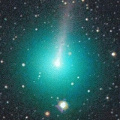
|
Now it is 11.0 mag (May 26, Paul Camilleri). It continued brightening for a while even after the perihelion passage on Mar. 15. It will be fading after this. It stays observable for a long time in the Northern Hemisphere. It is observable in the evening sky after this also in the Southern Hemisphere. It seems to be a fragment of C/1988 A1 (Liller), like C/1996 Q1 (Tabur) and C/2015 F3 (SWAN).
Date(TT) R.A. (2000) Decl. Delta r Elong. m1 Best Time(A, h)
May 30 11 26.33 50 25.9 1.332 1.559 82 10.6 20:50 (134, 64)
June 6 11 38.49 42 52.2 1.453 1.652 81 11.2 20:56 (116, 62)
|
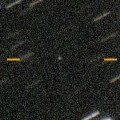
|
Now it is 17.9 mag (May 21, Catalina Sky Survey). It was expected to brighten rapidly up to 9.5 mag in June. But actually, it has not started brightening rapidly yet. It is not observable in June. However, it stays observable in good condition until May while the comet is brightening, and after July while the comet will be fading.
Date(TT) R.A. (2000) Decl. Delta r Elong. m1 Best Time(A, h)
May 30 7 59.55 16 27.3 0.445 0.803 49 12.2 20:50 ( 99, 16)
June 6 7 25.25 21 2.1 0.430 0.703 34 11.2 20:56 (112, 5)
|
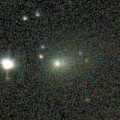
|
Now it is 12.8 mag (May 26, Paul Camilleri). Brightening very rapidly. It will brighten up to 8-9 mag from summer to autumn. It will be observable in excellent condition in the Southern Hemisphere. It locates very low around the high light in the Northern Hemisphere.
Date(TT) R.A. (2000) Decl. Delta r Elong. m1 Best Time(A, h)
May 30 12 39.05 -1 37.7 1.108 1.845 120 12.1 20:50 ( 18, 52)
June 6 12 39.40 -2 9.2 1.126 1.800 114 11.9 20:56 ( 30, 48)
|
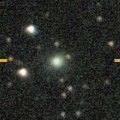
|
Now it is 14.9 mag (May 16, Thomas Lehmann). It will brighten up to 10.5 mag from 2020 December to 2021 January. In the Northern Hemisphere, it stays observable in good condition while the comet will be brightening gradually, but it is not observable at the high light. In the Southern Hemisphere, it is not observable for a long time, but it will be observable in good condition after the high light.
Date(TT) R.A. (2000) Decl. Delta r Elong. m1 Best Time(A, h)
May 30 12 29.45 72 39.6 2.911 2.870 77 13.4 20:50 (173, 52)
June 6 12 13.82 69 25.0 2.887 2.806 75 13.3 20:56 (165, 53)
|

|
Appearing in the morning sky.
Date(TT) R.A. (2000) Decl. Delta r Elong. m1 Best Time(A, h)
May 30 2 10.47 21 42.8 6.640 5.805 31 13.8 3:04 (247, 5)
June 6 2 15.62 22 13.8 6.582 5.806 37 13.8 3:01 (249, 9)
|

|
Now it is 13.5 mag (May 17, Thomas Lehmann). It stays bright as 13 mag until June. In the Southern Hemisphere, it will never be observable again.
Date(TT) R.A. (2000) Decl. Delta r Elong. m1 Best Time(A, h)
May 30 1 52.94 71 0.4 4.172 3.671 54 13.9 3:04 (202, 31)
June 6 2 8.27 73 17.6 4.184 3.706 55 13.9 3:01 (200, 33)
|

|
Now it is 14.2 mag (May 24, Paul Camilleri). It stays 13-14 mag from 2020 to 2021. It stays observable in good condition for a while.
Date(TT) R.A. (2000) Decl. Delta r Elong. m1 Best Time(A, h)
May 30 12 30.32 14 55.7 2.685 3.193 111 14.2 20:50 ( 34, 66)
June 6 12 31.06 14 2.6 2.756 3.178 105 14.2 20:56 ( 48, 61)
|
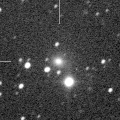
|
Now it is bright as 13.9 mag (Apr. 24, Chris Wyatt). It stays 15 mag until summer. It stays observable for a long time in the Southern Hemisphere. It is not observable until August in the Northern Hemisphere.
Date(TT) R.A. (2000) Decl. Delta r Elong. m1 Best Time(A, h)
May 30 3 0.68 -36 60.0 4.174 3.809 62 15.0 3:04 (294,-36)
June 6 3 5.66 -36 18.7 4.162 3.837 64 15.0 3:01 (294,-32)
|
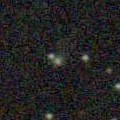
|
Now it is 15.2 mag (May 20, R. Carstens). It will brighten up to 13 mag in 2021. In 2020, it is observable at 15 mag in good condition from spring to summer.
Date(TT) R.A. (2000) Decl. Delta r Elong. m1 Best Time(A, h)
May 30 14 8.41 -21 12.4 4.078 4.963 147 15.0 21:35 ( 0, 34)
June 6 14 3.85 -21 29.3 4.102 4.923 140 15.0 21:03 ( 0, 33)
|
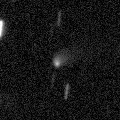
|
Now it is 15.4 mag (Apr. 22, Chris Wyatt). It stays 14-15 mag until 2021. In the Southern Hemisphere, it stays observable in good condition for a long time. In the Northern Hemisphere, it is not observable until June in 2021.
Date(TT) R.A. (2000) Decl. Delta r Elong. m1 Best Time(A, h)
May 30 15 53.30 -84 34.5 4.421 4.965 117 15.2 23:21 ( 0,-30)
June 6 15 26.22 -84 33.6 4.385 4.938 117 15.1 22:27 ( 0,-30)
|

|
Now it is 15.7 mag (May 26, Charles S. Morris). It is expected to be observable at 5-6 mag for a long time from 2022 to 2023. In the Northern Hemisphere, it is not observable at the high light from 2022 summer to 2023 summer. In the Southern Hemisphere, it is only visible in the extremely low sky in summer in 2020. But it will be observable in good condition at the high light.
Date(TT) R.A. (2000) Decl. Delta r Elong. m1 Best Time(A, h)
May 30 17 56.09 53 19.6 8.783 9.058 102 15.3 1:26 (180, 72)
June 6 17 51.19 53 25.1 8.724 9.007 103 15.2 0:53 (180, 72)
|

|
Bright new comet. Now it is 13.2 mag (Apr. 28, Alan Hale). It will fade out rapidly after this, and it will be fainter than 18 mag in late June. It stays observable in good condition in the Northern Hemisphere. It will be unobservable after this in the Southern Hemisphere.
Date(TT) R.A. (2000) Decl. Delta r Elong. m1 Best Time(A, h)
May 30 8 9.72 72 6.8 1.067 1.026 59 15.2 20:50 (157, 37)
June 6 8 49.66 65 6.0 1.270 1.102 56 15.9 20:56 (149, 37)
|

|
Now it is 15.2 mag (May 13, Hiroshi Abe). It stays 15-16 mag for a long time until 2021.
Date(TT) R.A. (2000) Decl. Delta r Elong. m1 Best Time(A, h)
May 30 20 38.52 9 26.6 4.010 4.477 111 15.5 3:04 (326, 61)
June 6 20 32.60 10 57.2 3.917 4.476 117 15.5 3:01 (340, 65)
|
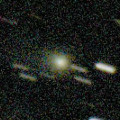
|
It brightened up to 10.8 mag (Apr. 20, Sandor Szabo). Now it is 14.6 mag (May 28, Charles S. Morris). It will fade out rapidly, and will be fainter than 18 mag in June.
Date(TT) R.A. (2000) Decl. Delta r Elong. m1 Best Time(A, h)
May 30 8 52.27 27 21.3 1.226 1.129 59 15.6 20:50 (102, 33)
June 6 9 30.32 24 49.7 1.319 1.228 61 16.4 20:56 ( 99, 33)
|
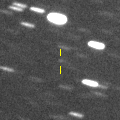
|
Now it is 16.8 mag (May 26, Charles S. Morris). It will brighten up to 15.5 mag from June to August, and it will be observable in good condition.
Date(TT) R.A. (2000) Decl. Delta r Elong. m1 Best Time(A, h)
May 30 19 24.03 -2 36.0 1.295 2.122 133 16.0 2:54 ( 0, 52)
June 6 19 25.40 -1 53.8 1.239 2.108 138 15.8 2:28 ( 0, 53)
|

|
New comet. Now it is 16.0 mag (May 14, iTelescope Observatory, Siding Spring). It will brighten up to 13.5 mag in spring in 2021. In the Southern Hemisphere, it stays observable in good condition for a long time. In the Northern Hemisphere, it is not observable until spring in 2021.
Date(TT) R.A. (2000) Decl. Delta r Elong. m1 Best Time(A, h)
May 30 22 36.29 -53 45.7 4.083 4.474 106 16.1 3:04 (335, -7)
June 6 22 30.31 -55 28.2 3.950 4.434 112 16.0 3:01 (339, -6)
|

|
Now it is 16.4 mag (May 21, ATLAS-MLO, Mauna Loa). It will brighten up to 12 mag in winter in 2022. In the Northern Hemisphere, it stays observable in good condition for a long time. In the Southern Hemisphere, it is not observable until 2021 November.
Date(TT) R.A. (2000) Decl. Delta r Elong. m1 Best Time(A, h)
May 30 0 21.47 51 1.0 6.696 6.180 55 16.2 3:04 (229, 37)
June 6 0 26.93 52 1.1 6.602 6.135 58 16.2 3:01 (228, 40)
|
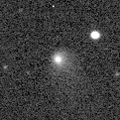
|
It brightened up to 13.8 mag in autumn in 2019 (Sept. 3, Chris Wyatt). Now it is fading slowly. Now it is 15.9 mag (May 13, iTelescope Observatory, Siding Spring). In 2020, it stays observable in good condition while the comet will be fading from 16 to 17 mag.
Date(TT) R.A. (2000) Decl. Delta r Elong. m1 Best Time(A, h)
May 30 0 33.84 -3 15.3 6.028 5.631 62 16.3 3:04 (281, 11)
June 6 0 36.02 -2 38.1 5.966 5.671 68 16.3 3:01 (284, 15)
|

|
Now it is 16.7 mag (May 20, ATLAS-MLO, Mauna Loa). It will stay at 15 mag for a long time from 2021 to 2022. In the Northern Hemisphere, it stays observable in good condition while brightening gradually. In the Southern Hemisphere, it stays locating low for a long time.
Date(TT) R.A. (2000) Decl. Delta r Elong. m1 Best Time(A, h)
May 30 18 48.75 34 24.8 5.863 6.353 114 16.4 2:18 ( 0, 89)
June 6 18 42.60 34 21.9 5.786 6.322 117 16.3 1:45 ( 0, 89)
|

|
It brightened up to 13.2 mag from spring to autumn in 2019 (June 30, Thomas Lehmann). Now it is fading slowly. It has already faded down to 16.0 mag (Apr. 25, iTelescope Observatory, Siding Spring). In the Southern Hemisphere, it stays observable for a long time. It becomes observable also in the Northern Hemisphere, but it locates low.
Date(TT) R.A. (2000) Decl. Delta r Elong. m1 Best Time(A, h)
May 30 0 11.29 -30 38.1 4.113 4.077 80 16.4 3:04 (306, -2)
June 6 0 11.82 -30 24.5 4.049 4.115 86 16.5 3:01 (309, 2)
|

|
Now it is 15.7 mag (May 18, ATLAS-MLO, Mauna Loa). It is observable at 16 mag in 2020. It is observable in excellent condition in the Southern Hemisphere. It locates somewhat low in the Northern Hemisphere.
Date(TT) R.A. (2000) Decl. Delta r Elong. m1 Best Time(A, h)
May 30 19 40.68 -29 47.5 5.887 6.657 136 16.5 3:04 (358, 25)
June 6 19 34.03 -29 45.6 5.820 6.669 144 16.5 2:37 ( 0, 25)
|
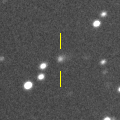
|
Now it is 16.9 mag (May 18, ATLAS-MLO, Mauna Loa). It stays observable at 16-17 mag from 2020 to 2021. It locates somewhat low in the Northern Hemisphere.
Date(TT) R.A. (2000) Decl. Delta r Elong. m1 Best Time(A, h)
May 30 10 47.03 -16 44.8 6.325 6.583 100 16.7 20:50 ( 42, 26)
June 6 10 49.57 -16 17.8 6.426 6.585 94 16.7 20:56 ( 49, 22)
|

|
Now it is 17.3 mag (May 18, W. Hasubick). It will be observable at 16.5-17 mag from spring in 2020 to summer in 2021.
Date(TT) R.A. (2000) Decl. Delta r Elong. m1 Best Time(A, h)
May 30 19 25.30 24 8.6 4.254 4.801 117 16.8 2:55 ( 0, 79)
June 6 19 16.42 24 4.9 4.168 4.787 122 16.8 2:19 ( 0, 79)
|

|
Now it is 17.4 mag (May 9, P. Camilleri, H. Williams, J. Oey). It is expected to brighten up to 13 mag in 2022. In 2020, it is observable in excellent condition in the Southern Hemisphere. In the Northern Hemisphere, it is not observable. It will be observable from autumn to winter, but it locating extremely low.
Date(TT) R.A. (2000) Decl. Delta r Elong. m1 Best Time(A, h)
May 30 6 41.93 -25 58.5 7.687 7.197 57 17.0 20:50 ( 73,-23)
June 6 6 46.87 -25 43.8 7.686 7.156 55 17.0 20:56 ( 77,-28)
|

|
It brightened up to 12-13 mag from 2018 to 2019. Now it is fading. It has already faded down to 16.9 mag (May 10, P. Camilleri, J. Oey). In the Southern Hemisphere, it stays observable in good condition for a long time. It will never be observable after this in the Northern Hemisphere.
Date(TT) R.A. (2000) Decl. Delta r Elong. m1 Best Time(A, h)
May 30 9 13.31 -63 19.5 5.244 5.535 101 17.0 20:50 ( 25,-20)
June 6 9 13.91 -62 2.3 5.336 5.581 98 17.1 20:56 ( 29,-22)
|

|
Now it is 18.8 mag (May 13, iTelescope Observatory, Siding Spring). It brightens up to 13.5 mag in winter. But it is not observable at high light. In the Southern Hemisphere, it stays observable in good condition until autumn when the comet will brighten up to 14 mag. It stays locating very low in the Northern Hemisphere.
Date(TT) R.A. (2000) Decl. Delta r Elong. m1 Best Time(A, h)
May 30 18 56.83 -46 33.2 1.968 2.830 141 17.3 2:27 ( 0, 8)
June 6 18 52.09 -46 53.3 1.897 2.800 146 17.0 1:55 ( 0, 8)
|

|
Now it is 17.0 mag (May 15, ATLAS-MLO, Mauna Loa). It will fade out after this, and will be fainter than 18 mag in July.
Date(TT) R.A. (2000) Decl. Delta r Elong. m1 Best Time(A, h)
May 30 12 41.89 -2 11.0 1.388 2.105 121 17.1 20:50 ( 17, 51)
June 6 12 46.71 -2 38.3 1.454 2.110 116 17.2 20:56 ( 27, 49)
|

|
Now it is 17.1 mag (May 19, ATLAS-MLO, Mauna Loa). It will brighten up to 16.5 mag and will be observable in good condition from June to October.
Date(TT) R.A. (2000) Decl. Delta r Elong. m1 Best Time(A, h)
May 30 20 29.46 9 22.9 1.686 2.283 113 17.2 3:04 (331, 62)
June 6 20 32.76 10 58.9 1.613 2.266 117 17.1 3:01 (340, 65)
|

|
Now it is 19.6 mag (May 3, Mt. Lemmon Survey). It will brighten very rapidly, and brighten up to 14.5 mag from August to September. In the Northern Hemisphere, it stays observable for a long time, although it becomes extremely low in early September. In the Southern Hemisphere, it is observable only until mid June.
Date(TT) R.A. (2000) Decl. Delta r Elong. m1 Best Time(A, h)
May 30 22 33.61 26 14.1 1.638 1.761 79 17.5 3:04 (270, 51)
June 6 22 40.16 32 51.0 1.495 1.674 81 17.1 3:01 (262, 57)
|
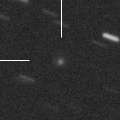
|
Now it is 16.5 mag (May 14, R. Ligustri). It will fade out after this, and will be fainter than 18 mag in July. Charles S. Morris reported that it is fading very rapidly down to 18.4 mag on May 26.
Date(TT) R.A. (2000) Decl. Delta r Elong. m1 Best Time(A, h)
May 30 15 13.76 2 46.1 2.706 3.616 149 17.2 22:40 ( 0, 58)
June 6 15 8.73 1 57.8 2.783 3.653 143 17.3 22:07 ( 0, 57)
|
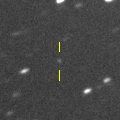
|
Now it is 18.0 mag (May 13, Mt. Lemmon Survey). It stays observable at 16-17 mag for a long time until 2024.
Date(TT) R.A. (2000) Decl. Delta r Elong. m1 Best Time(A, h)
May 30 15 52.74 -17 0.4 8.882 9.883 170 17.2 23:19 ( 0, 38)
June 6 15 48.46 -16 41.9 8.891 9.865 162 17.2 22:47 ( 0, 38)
|

|
New comet Now it is 17.0 mag (May 23, Katsumi Yoshimoto). It brightens up to 17 mag from June to July. It is observable in excellent condition in the Northern Hemisphere. In the Southern Hemisphere, it is observable only in the extremely low sky until early June and after August.
Date(TT) R.A. (2000) Decl. Delta r Elong. m1 Best Time(A, h)
May 30 0 4.10 40 21.1 1.863 1.583 58 17.3 3:04 (243, 38)
June 6 23 52.37 45 13.0 1.728 1.585 64 17.2 3:01 (238, 45)
|

|
Now it is 16.9 mag (May 10, Purple Mountain Observatory, XuYi Station). It will be fading after this, and it will be fainter than 18 mag in late June.
Date(TT) R.A. (2000) Decl. Delta r Elong. m1 Best Time(A, h)
May 30 13 1.75 -1 0.3 1.547 2.291 125 17.3 20:50 ( 9, 53)
June 6 13 4.43 -1 44.1 1.630 2.310 119 17.5 20:56 ( 21, 51)
|
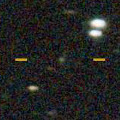
|
Now it is 17.6 mag (May 19, ATLAS-MLO, Mauna Loa). It became brighter than orignally predicted. It stays observable at 17 mag in good condition until autumn.
Date(TT) R.A. (2000) Decl. Delta r Elong. m1 Best Time(A, h)
May 30 12 38.82 -7 38.5 1.519 2.240 123 17.4 20:50 ( 16, 46)
June 6 12 40.85 -8 7.5 1.568 2.221 117 17.4 20:56 ( 26, 43)
|

|
It will pass the perihelion in 2021, and it is predicted to be observable at 17-18 mag from 2020 to 2022. However, it has not been observed at all since 2015. It was not detected, fainter than 20.5 mag, in 2017 May (Werner Hasubick).
Date(TT) R.A. (2000) Decl. Delta r Elong. m1 Best Time(A, h)
May 30 20 41.27 -21 50.9 5.437 6.032 121 17.5 3:04 (342, 31)
June 6 20 41.02 -21 51.3 5.336 6.019 128 17.4 3:01 (348, 32)
|

|
Now it is 17.0 mag (May 18, ATLAS-MLO, Mauna Loa). It will brighten up to 15.5 mag in early 2021. In 2020, it stays observable at 17 mag until November in the Southern Hemisphere, or until July in the Northern Hemisphere.
Date(TT) R.A. (2000) Decl. Delta r Elong. m1 Best Time(A, h)
May 30 14 12.69 -32 6.4 2.495 3.399 148 17.4 21:39 ( 0, 23)
June 6 14 7.57 -31 35.1 2.490 3.345 141 17.5 21:06 ( 0, 23)
|

|
Now it is 17.3 mag (Apr. 23, D. Buczynski). It will be observable at 16.5-17 mag from 2020 to 2021.
Date(TT) R.A. (2000) Decl. Delta r Elong. m1 Best Time(A, h)
May 30 1 59.77 67 57.5 6.835 6.255 51 17.5 3:04 (205, 30)
June 6 2 2.28 68 22.9 6.801 6.240 52 17.5 3:01 (206, 32)
|
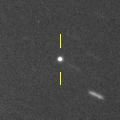
|
It brightened up to 15.9 mag in February and March (Feb. 18, Toshihiko Ikemura, Hirohisa Sato). Now it is fading. It has already faded down to 17.7 mag (May 15, A. Diepvens). It will be fainter than 18 mag in late June.
Date(TT) R.A. (2000) Decl. Delta r Elong. m1 Best Time(A, h)
May 30 10 29.94 -6 54.8 1.285 1.677 92 17.5 20:50 ( 53, 31)
June 6 10 39.40 -9 40.7 1.357 1.691 89 17.6 20:56 ( 56, 25)
|

|
Now it is 17.6 mag (May 21, ATLAS-MLO, Mauna Loa). It will be fading slowly after this. It is observable in good condition in the Northern Hemisphere. In the Southern Hemisphere, it is observable in the extremely low sky only in 2021 spring.
Date(TT) R.A. (2000) Decl. Delta r Elong. m1 Best Time(A, h)
May 30 12 38.49 51 57.9 8.792 8.866 90 17.5 20:50 (158, 71)
June 6 12 37.52 51 10.4 8.876 8.879 86 17.6 20:56 (144, 68)
|
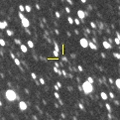
|
Now it is 18.4 mag (Apr. 22, W. Hasubick). It stays observable at 18 mag for a long time from 2019 to 2021.
Date(TT) R.A. (2000) Decl. Delta r Elong. m1 Best Time(A, h)
May 30 19 9.41 -18 14.9 6.865 7.690 142 17.6 2:39 ( 0, 37)
June 6 19 6.48 -18 48.3 6.801 7.692 149 17.6 2:09 ( 0, 36)
|

|
Now it is 18.7 mag (Apr. 18, iTelescope Observatory, Siding Spring). It brightens up to 16 mag from summer to winter. In the Southern Hemisphere, it is observable in excellent condition. In the Northern Hemisphere, it is not observable until late October.
Date(TT) R.A. (2000) Decl. Delta r Elong. m1 Best Time(A, h)
May 30 21 45.08 -53 4.1 1.733 2.332 113 17.8 3:04 (341, -2)
June 6 21 55.72 -54 32.9 1.636 2.284 117 17.7 3:01 (343, -3)
|
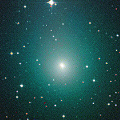
|
It brightened up to 8.3 mag in last September (Sept. 20, Maik Meyer). Now it is fading. It has already faded down to 17.1 mag (Apr. 5, iTelescope Observatory, Siding Spring). In the Southern Hemisphere, it stays observable for a long time after this. In the Northern Hemisphere, it will never be observable again.
Date(TT) R.A. (2000) Decl. Delta r Elong. m1 Best Time(A, h)
May 30 2 11.09 -68 25.9 3.454 3.660 93 17.7 3:04 (333,-35)
June 6 2 32.41 -70 29.5 3.475 3.729 96 17.8 3:01 (336,-35)
|
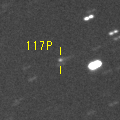
|
Now it is 17.7 mag (Apr. 14, Y. Sugiyama). It will brighten up to 13 mag in 2022. In 2020, it is observable at 17.5 mag in good condition in spring. It locates somewhat low in the Southern Hemisphere.
Date(TT) R.A. (2000) Decl. Delta r Elong. m1 Best Time(A, h)
May 30 10 16.40 19 40.8 4.426 4.370 80 17.8 20:50 ( 82, 46)
June 6 10 19.84 19 7.9 4.515 4.356 74 17.8 20:56 ( 86, 40)
|
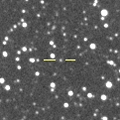
|
Now it is 17.2 mag (May 18, ATLAS-HKO, Haleakala). It is observable at 17-18 mag in good condition in 2020 summer.
Date(TT) R.A. (2000) Decl. Delta r Elong. m1 Best Time(A, h)
May 30 19 53.10 28 11.0 8.576 8.969 109 17.9 3:04 (329, 82)
June 6 19 50.26 28 54.8 8.506 8.962 113 17.9 2:52 ( 0, 84)
|
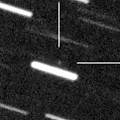
|
Now it is 17.9 mag (Apr. 30, Mt. Lemmon Survey). It will be fading after this.
Date(TT) R.A. (2000) Decl. Delta r Elong. m1 Best Time(A, h)
May 30 13 25.25 -18 19.3 3.127 3.930 137 17.9 20:51 ( 0, 37)
June 6 13 14.02 -18 9.4 3.226 3.931 127 18.0 20:56 ( 13, 36)
|

|
Now it is 17.1 mag (May 23, Charles S. Morris). It approached to Sun down to 0.5 a.u. in March, and it must have brightened up to 14 mag. It is fading very rapidly. But it may be somewhat brighter than this ephemeris.
Date(TT) R.A. (2000) Decl. Delta r Elong. m1 Best Time(A, h)
May 30 10 16.16 -6 3.7 1.055 1.456 89 18.7 20:50 ( 56, 30)
June 6 10 42.36 -6 41.9 1.189 1.553 89 19.3 20:56 ( 57, 28)
|
|
![]()
 C/2019 L3 ( ATLAS )
C/2019 L3 ( ATLAS ) C/2017 B3 ( LINEAR )
C/2017 B3 ( LINEAR ) C/2018 U1 ( Lemmon )
C/2018 U1 ( Lemmon ) C/2018 A6 ( Gibbs )
C/2018 A6 ( Gibbs ) C/2017 U7 ( PanSTARRS )
C/2017 U7 ( PanSTARRS ) C/2019 C1 ( ATLAS )
C/2019 C1 ( ATLAS ) C/2017 Y2 ( PanSTARRS )
C/2017 Y2 ( PanSTARRS ) C/2019 T4 ( ATLAS )
C/2019 T4 ( ATLAS ) C/2017 M4 ( ATLAS )
C/2017 M4 ( ATLAS ) 17P/Holmes
17P/Holmes 87P/Bus
87P/Bus 257P/Catalina
257P/Catalina C/2020 H4 ( Leonard )
C/2020 H4 ( Leonard ) P/2019 LM4 ( Palomar )
P/2019 LM4 ( Palomar ) C/2020 F2 ( ATLAS )
C/2020 F2 ( ATLAS ) C/2020 K3 ( Leonard )
C/2020 K3 ( Leonard ) P/2019 Y2 ( Fuls )
P/2019 Y2 ( Fuls ) 278P/McNaught
278P/McNaught C/2014 F3 ( Sheppard-Trujillo )
C/2014 F3 ( Sheppard-Trujillo ) 28P/Neujmin 1
28P/Neujmin 1 C/2019 T3 ( ATLAS )
C/2019 T3 ( ATLAS ) 124P/Mrkos
124P/Mrkos C/2010 U3 ( Boattini )
C/2010 U3 ( Boattini ) C/2017 K5 ( PanSTARRS )
C/2017 K5 ( PanSTARRS ) 162P/Siding Spring
162P/Siding Spring C/2018 W2 ( Africano )
C/2018 W2 ( Africano ) 117P/Helin-Roman-Alu 1
117P/Helin-Roman-Alu 1 A/2019 O3
A/2019 O3 C/2019 K6 ( PanSTARRS )
C/2019 K6 ( PanSTARRS ) P/2020 G1 ( Pimentel )
P/2020 G1 ( Pimentel )![]()












































